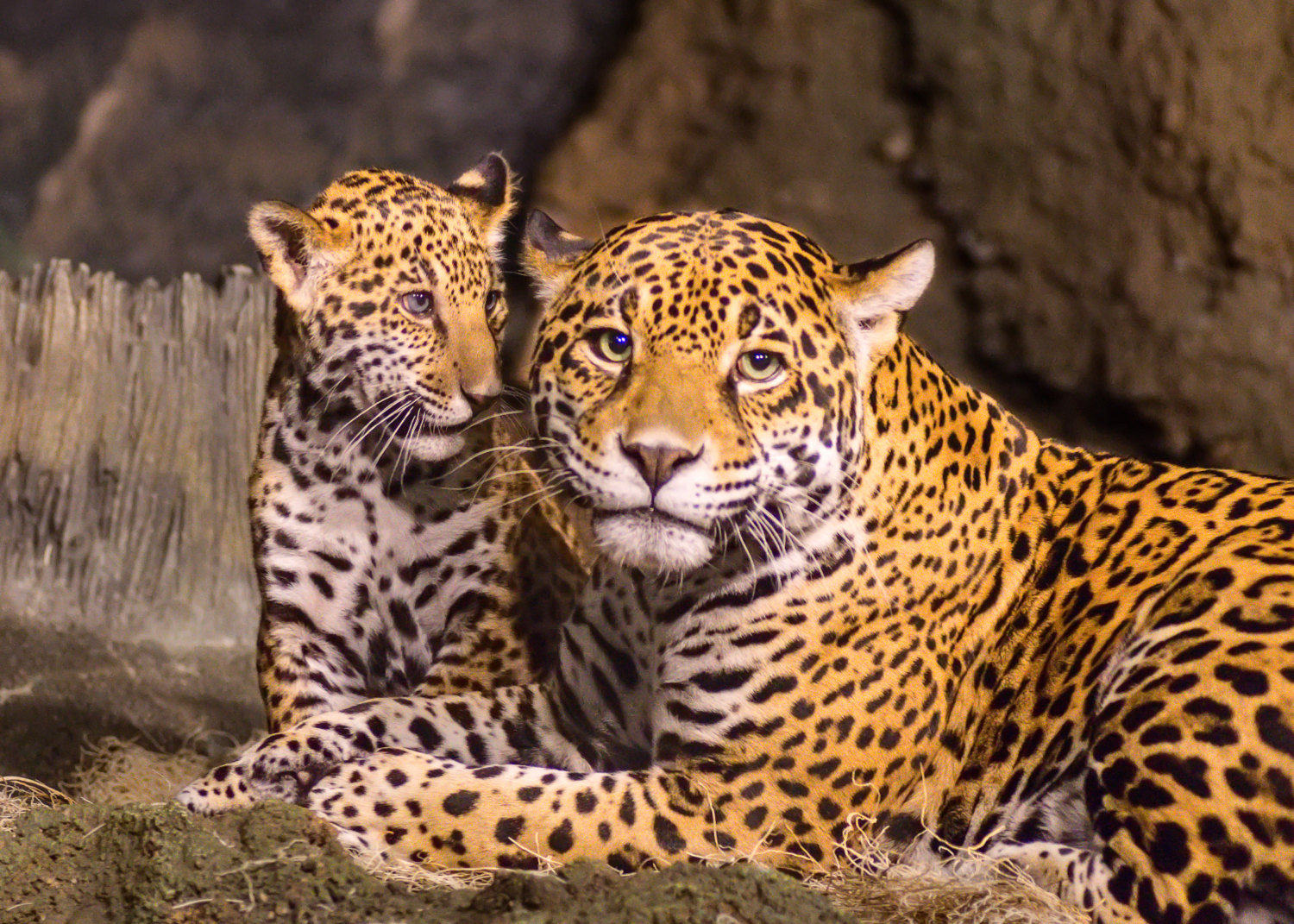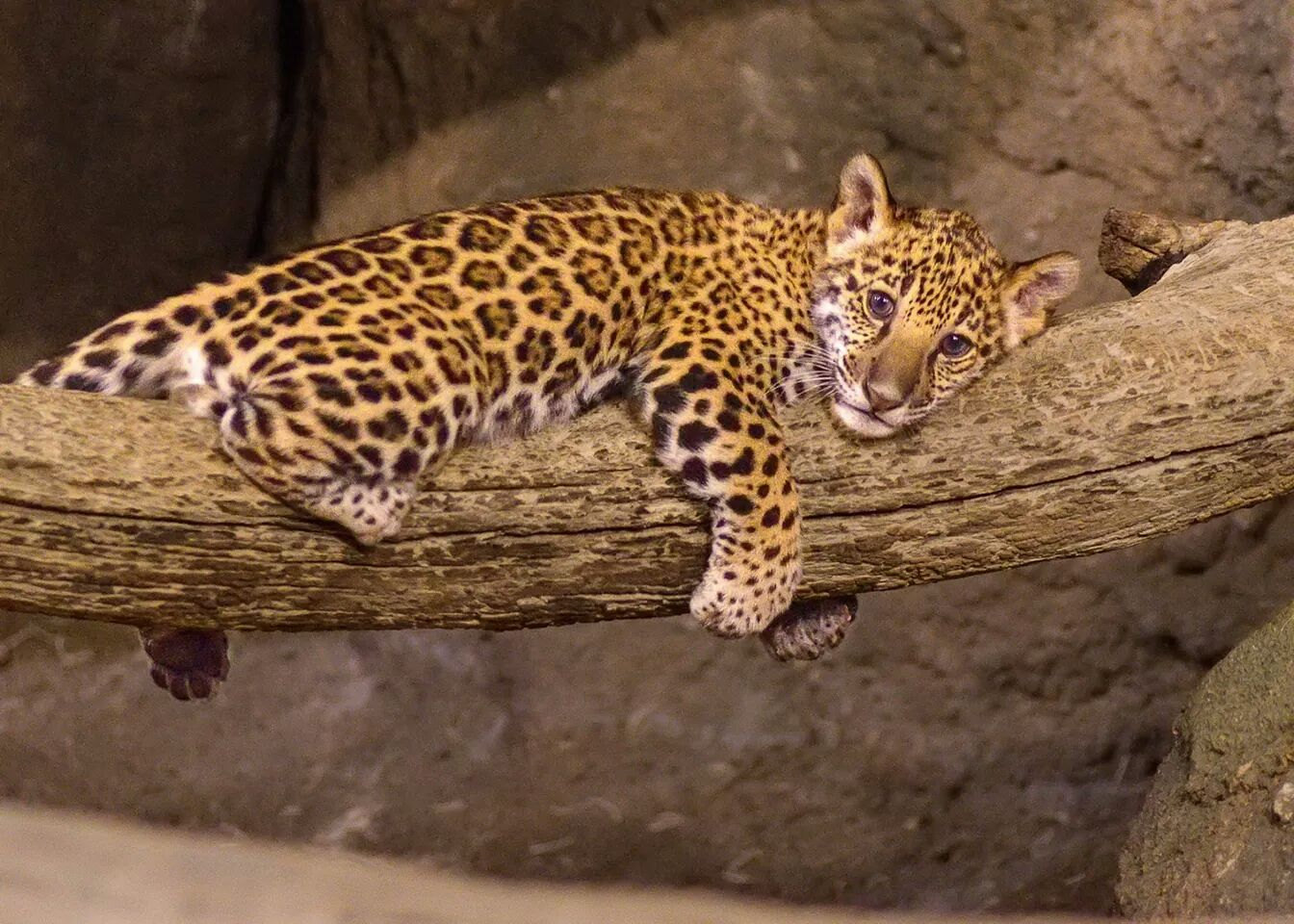Jaguar And Cub: Exploring The Fascinating World Of Wildlife Bonding
When it comes to wildlife, the bond between a jaguar and its cub is one of the most captivating relationships in the animal kingdom. The jaguar, known for its majestic presence and incredible strength, plays a crucial role in nurturing its young ones. This relationship is not only vital for the survival of the species but also offers valuable insights into the behavior of these magnificent creatures.
As apex predators, jaguars are often perceived as solitary animals, but their interactions with their cubs reveal a softer side. The nurturing behavior of a jaguar mother toward her young is essential for their development and survival in the wild. Understanding this bond helps us appreciate the complexity of wildlife dynamics and the importance of conservation efforts.
With increasing threats to their habitats, it's crucial to delve deeper into the lives of jaguars and their cubs. This article will explore various aspects of their relationship, from the birth of a cub to the lessons they learn in preparation for adulthood. By the end, you'll have a comprehensive understanding of the world of jaguars and their offspring.
Read also:Understanding Clicks The Key To Digital Success
Table of Contents
- Introduction to Jaguars
- Jaguar Cub Birth
- The Early Days
- The Mother-Cub Bond
- Survival Training
- Threats to Jaguars and Cubs
- Conservation Efforts
- Interesting Facts About Jaguars and Cubs
- Why Conservation Matters
- Conclusion
Introduction to Jaguars
Jaguars (Panthera onca) are the largest cats in the Americas and the third-largest cats in the world after lions and tigers. Native to the Americas, they can be found in various habitats, from dense rainforests to open grasslands. Known for their powerful build and distinctive rosette-patterned fur, jaguars are apex predators that play a critical role in maintaining ecosystem balance.
Despite their reputation as solitary hunters, jaguars exhibit a deep connection with their cubs during the early years of their offspring's life. This bond is crucial for the survival of the species and highlights the importance of understanding their behavior in the wild.
Jaguar Cub Birth
The birth of a jaguar cub is a significant event in the life of a female jaguar. After a gestation period of approximately 93 to 105 days, a mother jaguar gives birth to a litter of one to four cubs. The cubs are born blind and entirely dependent on their mother for survival during the first few weeks of their lives.
During this time, the mother remains close to her den, protecting her cubs from potential threats. The den is usually located in a secluded area, such as a cave or dense vegetation, providing a safe environment for the cubs to grow.
The Early Days
In the first few weeks, jaguar cubs rely entirely on their mother's milk for nourishment. Their eyes open around two weeks after birth, and by the time they are two months old, they begin to explore their surroundings under the watchful eye of their mother.
At this stage, the cubs start learning basic skills, such as walking and climbing. Their playful behavior serves as a foundation for more complex skills they will need as they grow older.
Read also:Understanding The Role And Impact Of The Organizacioacuten Mundial De Comercio
The Mother-Cub Bond
The bond between a jaguar mother and her cub is both nurturing and protective. The mother spends a significant amount of time teaching her cubs essential survival skills. This bond is crucial for the cubs' development and prepares them for the challenges they will face in the wild.
Research shows that jaguar mothers are highly attentive to their cubs' needs, ensuring they are well-fed and protected from predators. This dedication is vital for the survival of the species, as only a small percentage of cubs make it to adulthood.
Survival Training
Developing Hunting Skills
Hunting is a fundamental skill that jaguar cubs must master to survive in the wild. By the age of six months, cubs begin accompanying their mother on hunting expeditions. During these outings, they observe her techniques and gradually practice their own.
- Jaguars are known for their powerful bite, which they use to deliver a fatal blow to their prey.
- Cubs learn to stalk and ambush prey, skills that are essential for successful hunts.
- Through repeated practice, they refine their techniques and become proficient hunters by the time they are one and a half years old.
Territory Awareness
Understanding territory is another critical aspect of jaguar survival. Cubs learn to recognize the boundaries of their mother's territory and the signs of other jaguars in the area. This knowledge helps them avoid conflicts with adult males and other potential threats.
As they grow older, cubs begin to establish their own territories, which they will defend once they leave their mother's care.
Threats to Jaguars and Cubs
Jaguars and their cubs face numerous threats in the wild, including habitat loss, poaching, and human-wildlife conflict. Deforestation and agricultural expansion have significantly reduced the jaguar's natural habitat, forcing them to venture closer to human settlements.
In addition, jaguar cubs are particularly vulnerable to poachers who target them for their fur or to sell them in the illegal wildlife trade. Conservation efforts are crucial to protect these magnificent animals and ensure their survival for future generations.
Conservation Efforts
Protected Areas
Establishing protected areas is one of the most effective ways to conserve jaguars and their habitats. These areas provide a safe haven for jaguars and their cubs, allowing them to thrive without the threat of human interference.
Organizations such as the World Wildlife Fund (WWF) and Panthera are actively working to create and expand protected areas across the jaguar's range. These efforts involve collaboration with governments, local communities, and other stakeholders to ensure the long-term survival of the species.
Community Involvement
Engaging local communities is another key aspect of jaguar conservation. By educating communities about the importance of jaguars in the ecosystem and providing alternative livelihoods, conservationists aim to reduce human-wildlife conflict.
Programs that promote eco-tourism and sustainable agriculture help communities benefit from the presence of jaguars, creating a win-win situation for both people and wildlife.
Interesting Facts About Jaguars and Cubs
- Jaguars are the only big cats in the Americas that roar.
- Their name comes from the Native American word "yaguar," which means "he who kills with one leap."
- Jaguar cubs are born with a blue-gray coat, which gradually develops into the distinctive rosette pattern as they grow.
- Unlike many other big cats, jaguars are excellent swimmers and often hunt in water.
Why Conservation Matters
Conserving jaguars and their cubs is not only important for the survival of the species but also for the health of ecosystems they inhabit. As apex predators, jaguars help maintain balanced populations of prey species, preventing overgrazing and habitat degradation.
Furthermore, jaguars play a significant role in indigenous cultures and traditions, making their conservation a matter of cultural heritage as well. Protecting these magnificent animals ensures that future generations can continue to marvel at their beauty and importance.
Conclusion
The bond between a jaguar and its cub is a remarkable example of nature's intricate relationships. From the moment of birth to the challenges faced in adulthood, the journey of a jaguar cub is both fascinating and inspiring. Understanding this bond not only deepens our appreciation for these incredible animals but also highlights the importance of conservation efforts.
We invite you to take action by sharing this article, supporting conservation organizations, and spreading awareness about the plight of jaguars and their cubs. Together, we can make a difference in ensuring the survival of these magnificent creatures for generations to come.


